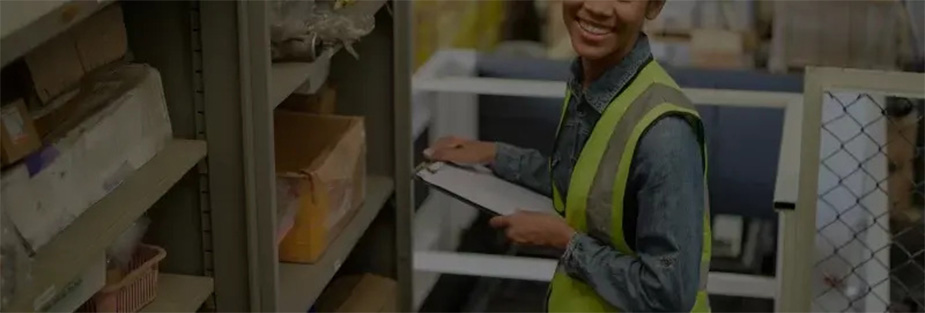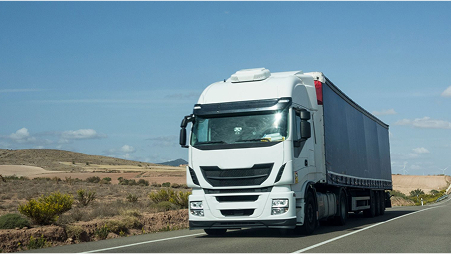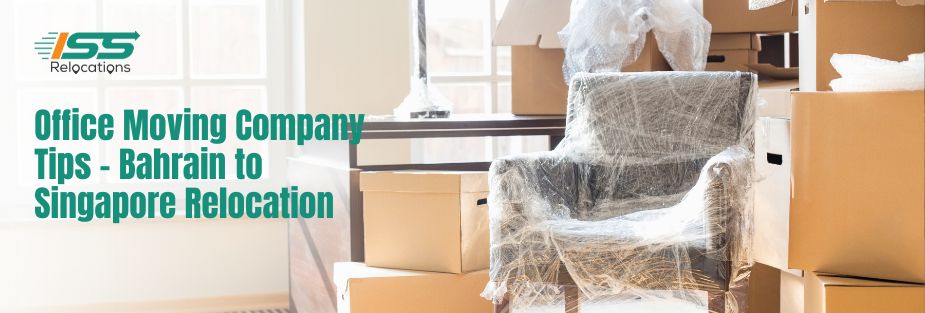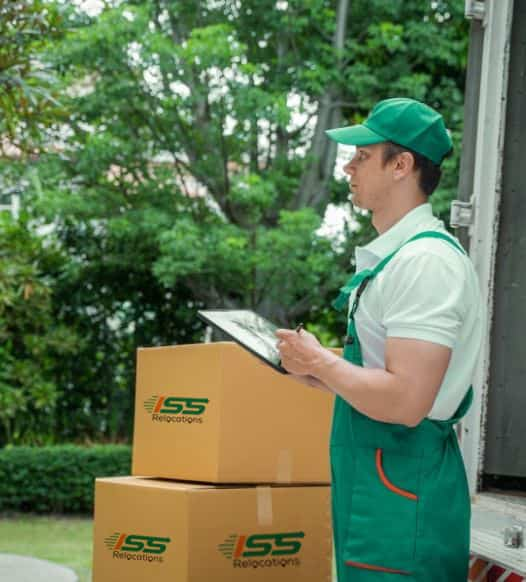
How to Store Items Before a Move
Moving can be a stressful and overwhelming experience, especially when it comes to packing and storing your belongings. Proper item storage before a move is crucial to ensure the safety of your items during the relocation process. This is particularly important when moving long distances or internationally, as it can be difficult to monitor and maintain the condition of your items. Proper storage can also make the unpacking process much easier and less stressful.
At ISS Relocations, we understand the importance of proper item storage before a move. As a leading relocation company, we specialize in hassle-free relocation of all your goods, heavy machinery, and items when you are moving abroad. We believe in providing our customers with the highest quality of service, ensuring that they are absolutely satisfied after their relocation with zero damage.
Preparing for Storage
Sort and Declutter
1. Decluttering your items before a move can be a beneficial process for several reasons. It can help you to:
Reduce the number of items you need to store and transport, potentially saving you money on storage fees and transportation costs
Streamline the packing and unpacking process, making it easier and less time-consuming
Reduce the overall stress of moving by minimizing the number of items you need to manage
2. When sorting your items, it’s important to be practical and realistic about what you need to keep and what you can get rid of. Here are some helpful tips:
Begin sorting and decluttering at least a few weeks before your move, so you have plenty of time to make decisions and get rid of items.
– Make a list of all your items and categorize them based on their value, usefulness, and sentimentality.
– Consider donating or selling items that you no longer need or want.
– Properly dispose of any items that are broken, damaged, or beyond repair.
Organize and Label
1. Organizing and labelling your items can save you a lot of time and effort during the packing and unpacking process. Here are some of the benefits:
– Labelling your boxes and containers can help you quickly identify the contents of each box, making it easier to locate specific items.
– Organizing your items in a logical manner can help prevent confusion and ensure that items are packed and stored properly.
– Organizing your items can help you maximize space in your storage containers, potentially saving you money on storage fees.
2. Here are some tips for organizing and labelling your items:
– Create a labelling system that works for you, such as labelling each box with a number or colour code, and keeping a corresponding inventory list.
– Organize your items by category, such as kitchen items, clothing, or books, to make packing and unpacking easier.
– Use a permanent marker to label each box clearly with its contents and destination room.
Choosing the Right Storage Space
A. Types of Storage Facilities
1. Self-storage facilities
Self-storage facilities are a popular choice for people who are looking for a cost-effective storage option. These facilities offer a range of unit sizes, from small lockers to large storage rooms. They typically provide 24-hour access to the units, making it easy for you to access your items whenever you need them. However, it is important to note that self-storage facilities usually do not offer any assistance with packing, loading, or unloading your items.
2. Full-service storage facilities
Full-service storage facilities, on the other hand, provide a more comprehensive storage solution. These facilities typically offer a range of services, including packing, loading, and unloading your items. They also provide climate-controlled units, which are ideal for storing items that are sensitive to temperature and humidity. Full-service storage facilities usually have a team of trained professionals who can help you with every aspect of the storage process.
B. Factors to Consider When Choosing a Storage Facility
1. Location – One of the most important factors to consider when choosing a storage facility is its location. Ideally, you want to choose a facility that is close to your home or office, making it easy for you to access your items when you need them. However, if you are looking for a more cost-effective option, you may need to choose a facility that is farther away.
2. Security – Security is another important factor to consider when choosing a storage facility. You want to choose a facility that has a strong security system in place, including surveillance cameras, security gates, and security personnel. This will help to ensure that your items are safe and secure while they are in storage.
3. Size – The size of the storage unit you choose will depend on the number of items you need to store. It is important to choose a unit that is big enough to accommodate all of your items, but not so big that you end up paying for unused space.
4. Climate Control – If you are storing items that are sensitive to temperature and humidity, such as artwork, electronics, or antiques, you may need to choose a facility that offers climate-controlled units. These units are designed to maintain a consistent temperature and humidity level, which can help to protect your items from damage.
C. Benefits of Choosing a Professional Storage Service
1. Assurance of safety and security of stored items
When you choose a professional storage service, you can rest assured that your items will be safe and secure while they are in storage. These services typically have a strong security system in place, as well as climate-controlled units that are designed to protect your items from damage.
2. Convenience and flexibility of storage options
Professional storage services also offer a range of storage options to suit your needs. Whether you need short-term or long-term storage, a small or large unit, or packing and loading assistance, a professional storage service can provide the convenience and flexibility you need.
Packing and Wrapping Items for Storage
Proper packing and wrapping of your items are essential for ensuring that they remain safe and secure while they are in storage. Here are some tips for packing and wrapping your items:
A. Choosing the Right Packing Materials
1. Boxes – When selecting boxes for storage, choose boxes that are sturdy and in good condition. Avoid using old or damaged boxes, as they may not provide adequate protection for your items.
2. Bubble wrap – Bubble wrap is a great way to protect fragile items during storage. Wrap fragile items in bubble wrap before placing them in boxes.
3. Packing peanuts – Packing peanuts can help to fill empty spaces in boxes, which can help to prevent items from shifting during transport.
4. Stretch wrap – Stretch wrap is a type of plastic wrap that is commonly used for bundling and securing larger items, such as furniture or appliances. It can also be used to wrap multiple smaller items together, such as a set of chairs. Stretch wrap is a great option for securing items during transport, as it can hold items tightly in place and prevent shifting or sliding.
When using stretch wrap, it’s important to ensure that it’s wrapped tightly around the item or items being secured. This will help to prevent any movement during transport. It’s also a good idea to use multiple layers of stretch wrap for added security.
B. Tips for Packing and Wrapping
1. Packing fragile items – When packing fragile items, it’s important to take extra care to ensure that they are properly protected during transport and storage. Here are some tips for packing fragile items:
– Use plenty of packing material, such as bubble wrap or packing peanuts, to cushion fragile items.
– Choose a sturdy box that is the appropriate size for the item being packed.
– Label the box as “fragile” to alert movers or anyone else handling the box that it contains delicate items.
– Pack fragile items separately from other items to prevent them from rubbing against each other and potentially breaking.
– Consider using specialized packing materials, such as foam inserts or custom-sized boxes, for particularly delicate or valuable items.
2. Maximizing space in storage containers – When packing items for storage, it’s important to make the most of the available space in each container. Here are some tips for maximizing space:
– Use boxes that are the appropriate size for the items being packed. Overly large boxes can waste space and make items more likely to shift during transport or storage.
– Pack items tightly together to prevent shifting or movement.
– Fill any empty space in boxes with packing material, such as packing peanuts or crumpled paper, to provide cushioning and prevent items from shifting.
– Use stackable containers to make the most of vertical space in storage units.
3. Using quality packing tape – Using quality packing tape is essential for ensuring that items are properly secured during transport and storage. Here are some tips for choosing and using packing tape:
– Choose a tape that is strong and durable. Cheap or low-quality tape may not hold up during transport or over time in storage.
– Use enough tape to properly seal boxes and secure items. A single strip of tape may not be enough for larger or heavier items.
– Apply tape to all seams and edges of boxes to ensure that they are fully sealed.
– Use a tape dispenser for easier application and to ensure that tape is evenly applied.
Loading and Transporting Items to Storage
A. Benefits of Hiring Professional Movers
Hiring professional movers can provide a number of benefits when it comes to loading and transporting items to storage. Here are some reasons to consider hiring professional movers:
1. Trained and experienced movers
Professional movers have the training and experience needed to properly load and transport items safely and efficiently. They know how to handle items of all shapes and sizes, and can use specialized equipment to ensure that items are properly secured during transport.
2. Specialized equipment for safe handling and transport
Professional movers have access to specialized equipment, such as hand trucks, dollies, and moving blankets, which can make loading and transporting items easier and safer. They also have access to larger vehicles, such as moving trucks or vans, which can accommodate larger or heavier items.
B. Tips for Loading and Transporting Items to Storage
1. When loading items into a moving truck, it’s important to make the most of the available space to avoid wasting space and to prevent items from shifting during transport. Here are some tips for maximizing space:
2. Begin by loading the heaviest and bulkiest items such as furniture, appliances, and heavy boxes first. This creates a solid base and allows you to build up from there.
3. Cover your furniture and other large items with furniture pads and blankets to protect them from scratches and dings during the move. You can also use these materials to fill gaps and spaces in between items.
4. Use tie-downs and straps to secure larger items in place and prevent them from shifting during the move. This is especially important for items that are prone to tipping over, such as tall bookcases, wardrobes, and refrigerators.
5. Stack boxes in a way that maximizes the use of space. Start by placing the heaviest boxes at the bottom and work your way up to lighter boxes. Be sure to stack boxes tightly to avoid shifting during transit.
6. Use mattress bags to protect your mattresses from dirt, dust, and moisture during the move. These bags also make it easier to transport and manoeuvre mattresses around tight corners and through doorways.
7. The corners of the moving truck can be easily overlooked when loading items, but they can be great spaces for storing lightweight items such as lamps, chairs, and small boxes.
8. Leave a pathway in the centre of the truck for easy access to items and for manoeuvring items in and out of the truck. This will also make it easier to unload the truck when you reach your storage facility.
Conclusion
Proper item storage before a move is essential for ensuring the safety and security of your belongings during transport. This involves decluttering, organizing, and labelling your items, choosing the right storage facility, packing and wrapping your items carefully, and loading and transporting your items to storage safely and efficiently.
Proper item storage can make a big difference in ensuring a smooth and stress-free move. Taking the time to properly prepare and store your items can help prevent damage, save time and money, and give you peace of mind knowing that your belongings are in good hands.
If you’re looking for a hassle-free and stress-free relocation experience, consider hiring a professional relocation company such as ISS Relocations. With their expertise and experience in handling all types of moves, you can rest assured that your belongings will be moved safely and securely to your new home or storage facility.
Also, read our other posts related to storage:
Plan Stress-free Move with Top Moving Company in UAE - ISS Relocations

Frequently Asked Questions
How do I prepare for movers to pack my stuff?
Preparing for movers involves decluttering, organizing, and labeling your belongings. ISS Relocations recommends sorting essential and non-essential items, disposing of unnecessary goods, and securing fragile items separately. Clear pathways for movers and communicate any special instructions. Our packing services ensure everything is handled professionally, saving you time and effort.
Where should I store my stuff before moving to UAE?
If you need temporary storage before your move to UAE, ISS Relocations offers secure, climate-controlled storage solutions. Our facilities provide short-term and long-term storage options, ensuring your belongings remain safe and intact until your relocation is finalized. Whether you need storage for furniture, personal items, or business assets, we offer customized storage plans to suit your needs.
How do I pack for moving into storage for UAE?
Packing for storage requires durable materials and careful organization. ISS Relocations suggests using sturdy boxes, vacuum-sealed bags, and waterproof coverings for protection. Label each box clearly and store heavier items at the bottom. Our professional packing services ensure your belongings are securely wrapped and stored in optimal conditions until your move to UAE.
How do you organize before moving to UAE?
Organizing before moving to UAE involves sorting your belongings, creating an inventory, and packing systematically. ISS Relocations advises decluttering unnecessary items, labeling boxes by category, and keeping essential documents accessible. Our expert moving team assists with packing, labeling, and storing, ensuring a seamless transition to your new home.
What to pack first when moving to UAE?
When moving to UAE, start by packing non-essential items such as seasonal clothing, books, and decorative pieces. ISS Relocations recommends securing fragile items early, labeling boxes, and keeping daily essentials separate for easy access. Our professional packing services ensure a smooth and efficient moving process, reducing stress and saving time.
How to prepare for movers packing your stuff?
To prepare for movers, organize your items, declutter unnecessary belongings, and set aside valuables or important documents. ISS Relocations provides expert packing services, handling everything from fragile goods to large furniture. Communicate any special handling instructions, and let our professionals ensure your belongings are packed safely and securely.
How to pack before moving to UAE?
Packing before moving to UAE requires a structured approach. ISS Relocations advises starting early, using high-quality packing materials, and labeling all boxes for easy identification. Secure fragile items with bubble wrap and choose sturdy boxes for heavy goods. Our relocation services handle the packing and storage process efficiently, ensuring a hassle-free move.
Moving Company - Recent Blog
Stay informed and prepared for your next move with our latest blogs on moving services in the UAE. From expert packing tips to international relocation guides, ISS Relocations brings you up-to-date insights to make your moving experience smoother, safer, and stress-free.










